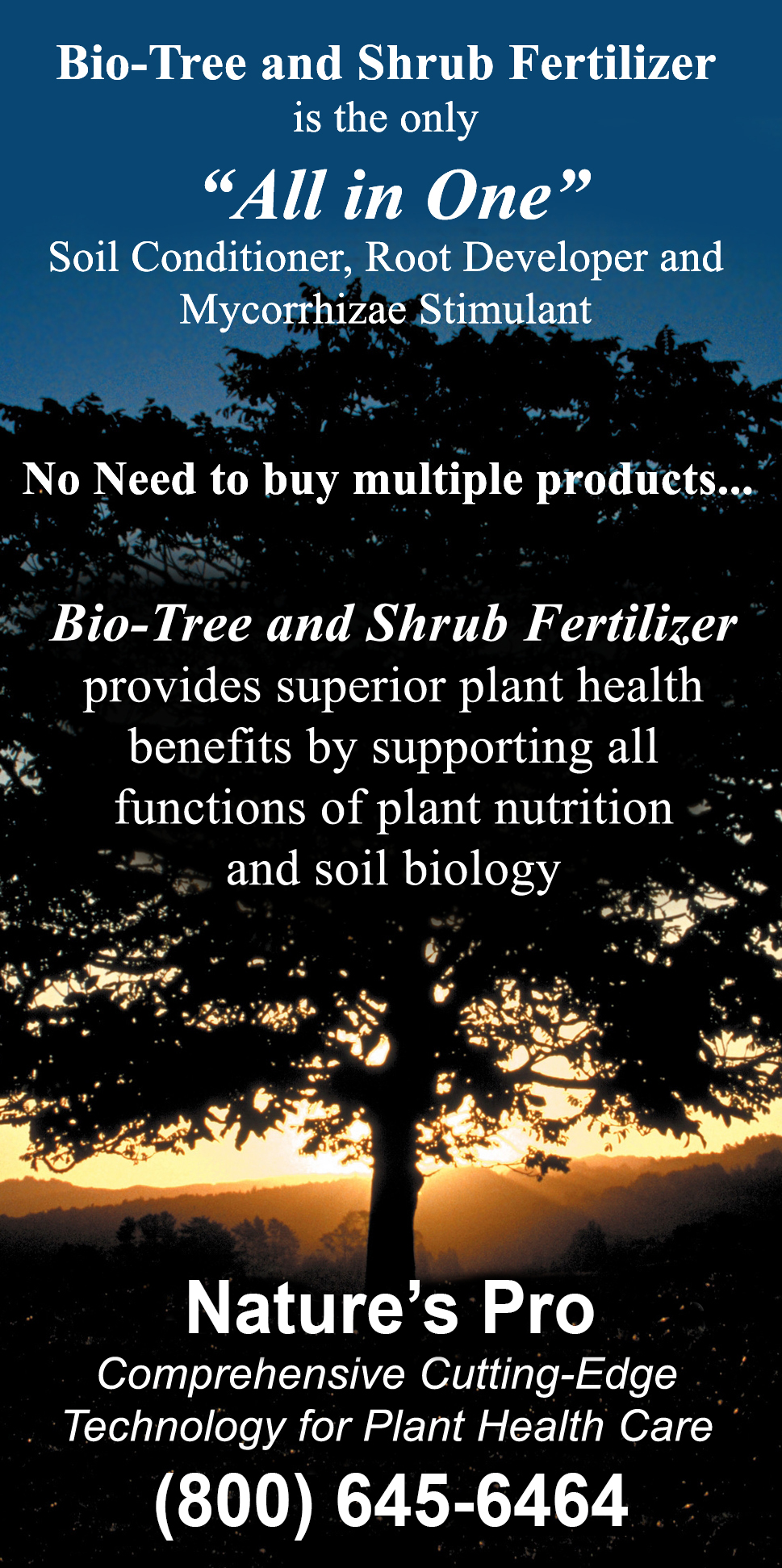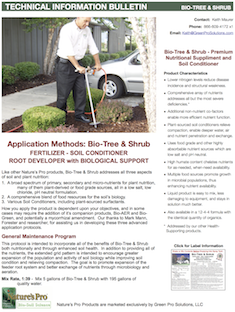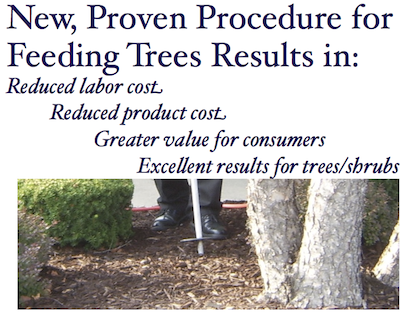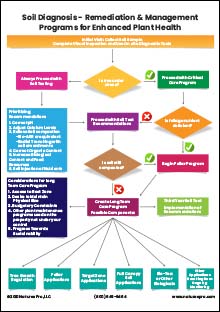Bio
- Tree & Shrub All-in-One 10-5-5
Fertilizer, Root Developer & Mycorrhizae
Stimulant
The
Only Comprehensive “All-In-One” Plant Health Product
Compositional
Characteristics Supporting Plant Health Since 1979
| 1. | The
Soil is the Basis for all Plant Health First, the soil
must be loose enough for an ample, continuous airflow to supply
oxygen for the roots, the all important Mycorrhizae and a host of
other micro organisms that benefit the plants, keep the soil functioning,
and making nutrients available for use by the plants.
THEREFORE:
The most important part of the Nature's Pro Bio-Tree &
Shrub Fertilizer, Root Developer and Mycorrhizae Stimulant
is organic material that conditions the soil to be loose and provide
food energy for the microorganisms within the soil. The organic
materials work to augment the Carbon Cycle by supplying readily
available carbon which replaces the natural leaf fall and decomposition
typically found in forests, but not in landscapes. The carbon
is sourced from humates in sufficient
quantities to be effective for short, intermediate and long-term
use. |
|
| 2. | The
Root System of every plant provides the Foundation for it’s
Ability to be Healthy. There is a mountain of evidence,
especially in agriculture, that proves healthy plants can resist
insect and disease problems. |
 |
THEREFORE: The next important organic ingredients are root stimulants to develop healthy and extensive root systems. With the continued use of Bio-Tree & Shrub, the soil improves further, thus fostering increased root development. |
||
| 3. | Do
We Add Mycorrhizae? Not specifically, even though our Bio-Tree
& Shrub product does contain latent beneficial microbial
life of all kinds. The reason why we don’t add Mycorrhizae to our product is because Nature has set up a complex system of checks and balances within the soil that is specific for that soil and environment. Adding Mycorrhizae would be of marginal benefit, especially when you consider that there are typically ample microorganisms (Mycorrhizae being only one type) already present in most soils. Even if they are latent, they reestablish themselves as soon as the conditions for their growth are present (carbon for food energy, air flow for oxygen, and appropriate moisture). Microbe populations flourish when conditions are proper. According to many authorities who have worked with Mycorrhizae for decades, only in soil that has been intentionally sterilized, would the addition of Mycorrhizae make sense. THEREFORE:
The continued use of Bio-Tree & Shrub Fertilizer,
Root Developer and Mycorrhizae Stimulant insures the
continuance of healthy soil conditions allowing dormant Mycorrhizae
and a vast array of other microbes to flourish, providing maximum
benefit for all plants in balance with the specific environment
in which they must live. |
|
| 4. |
Under natural, Forest growing conditions, Nutrients are
Recycled through Decomposition, which is not possible in urban and
suburban landscapes. To make up for this deficiency,
some companies inject man-made nutrients into the soil and root
zone. Fertilizers with a high salt index, highly acidic or containing
chlorides, are toxic
and upset the biological balances within the soil. Also, it is beneficial
to the plant to be “fed” in a way that mimics a natural
forest floor “feeding.” THEREFORE: Bio-Tree & Shrub contains N.P.K. nutrients that are compatible with the soil (neutral pH, low salt and chloride levels,) and are released in a slow and “natural” way. This is accomplished by using an adequate amount of humates. The humate molecule captures the raw nutrients, and holds them for the plant’s use. We describe this as a “metering” action (unlike a slow-release action that is dependent upon temperature, moisture and microbial breakdown). The significant difference is that EACH plant takes up ONLY the nutrients that it needs! There is NO force feeding which can result in weak wood and a greater attraction for insect activity because of excessive growth. |
|
| 5. | Plant Health Care for the 21st century should be a ‘holistic approach’ starting with and focusing on healthy and sustainable soils. Over the last 20-30 years, the general public have expressed the desire that their landscapes be maintained with no ‘chemicals,’ or at least the very minimum required to keep them looking beautiful. Part of that challenge is that ‘beauty’ doesn’t necessarily translate to ‘health.’ It is a fact that naturally healthy plants can often resist attacks from many different insect and disease issues, thereby reducing the need for chemical intervention. And since plants can only be as healthy as the soil in which they grow, understanding your soil (testing) and using organic-based products to supply the nutrition, biological supports, growth stimulators and soil conditioners will help create sustainable, healthy, productive soils. | |



